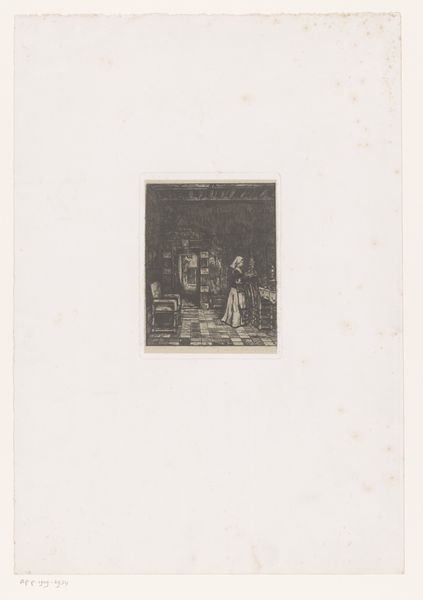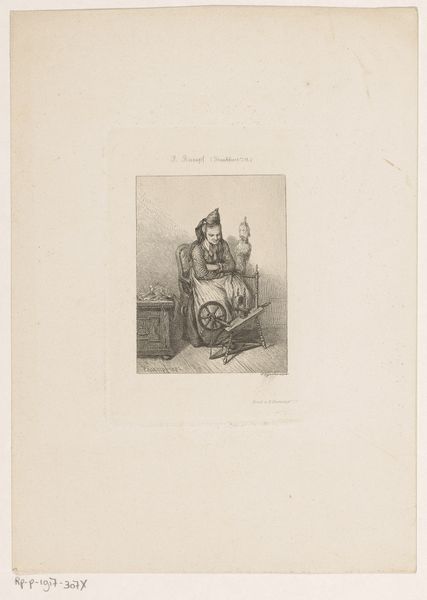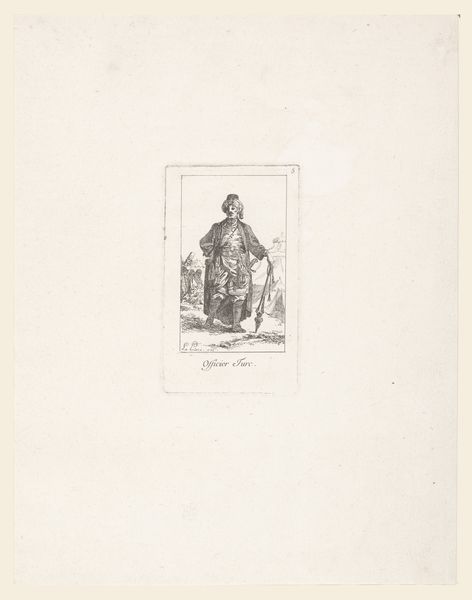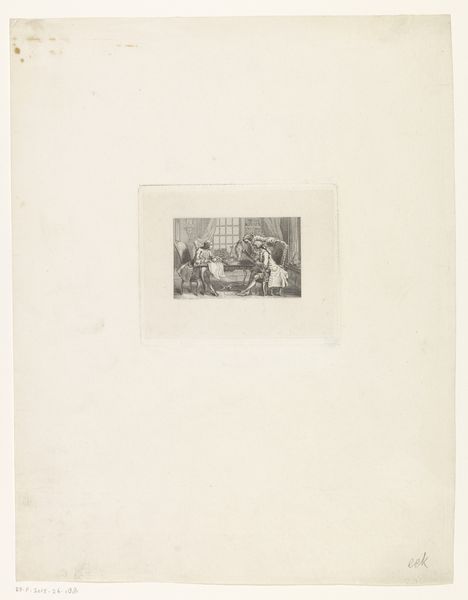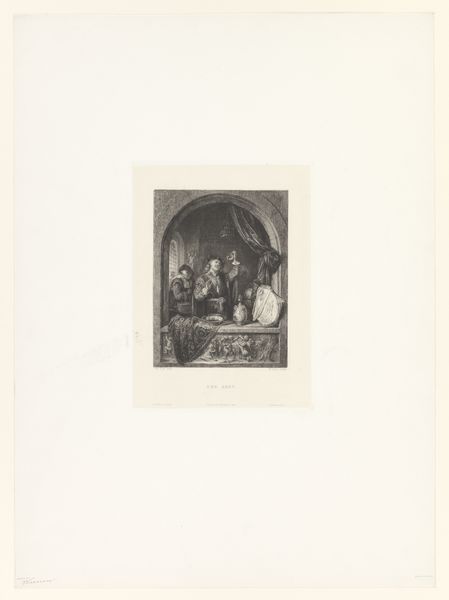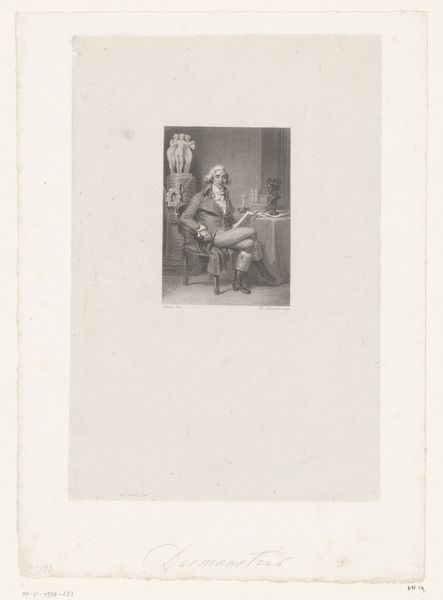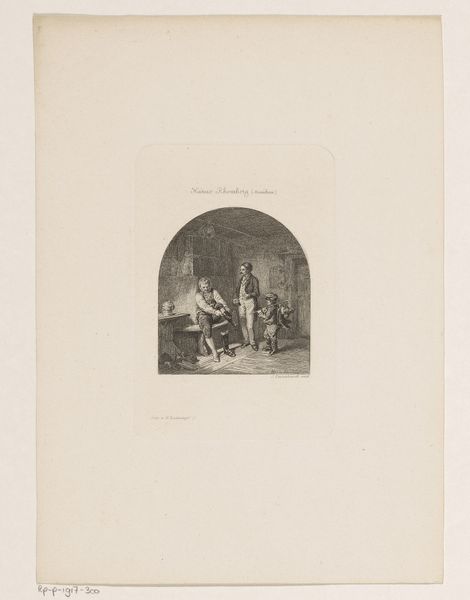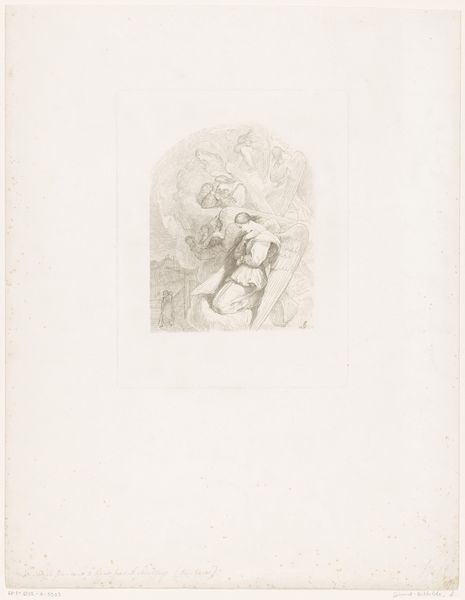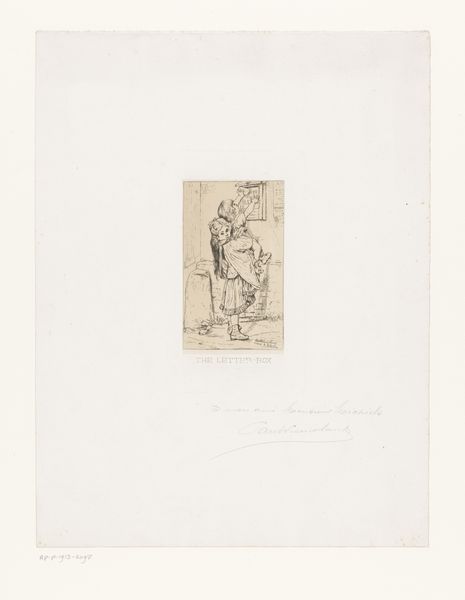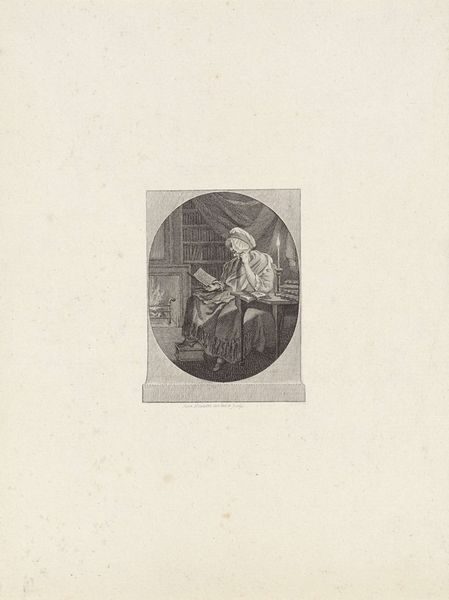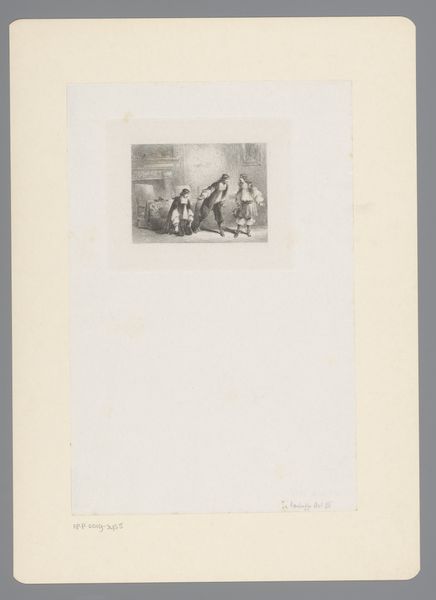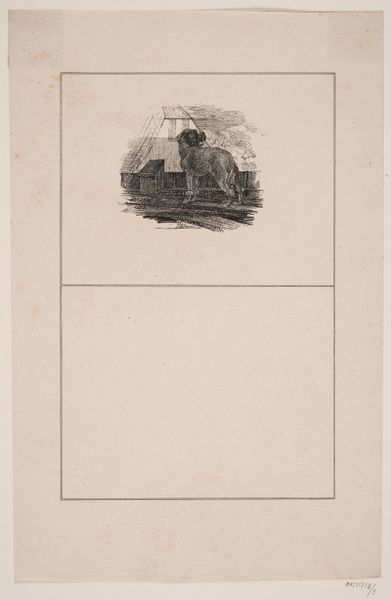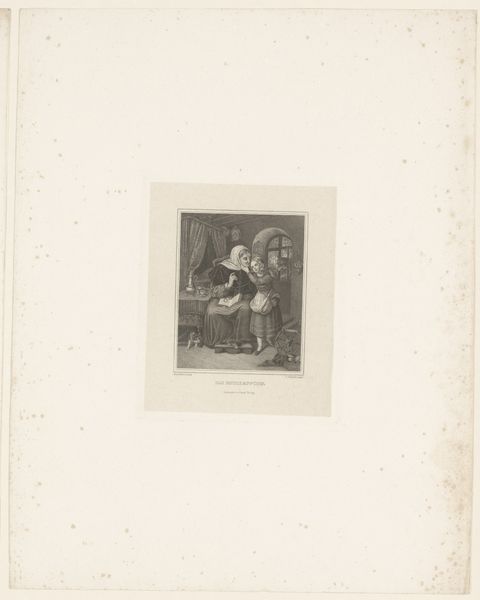
drawing, print, paper, engraving
#
portrait
#
drawing
# print
#
old engraving style
#
paper
#
history-painting
#
academic-art
#
engraving
Dimensions: height 196 mm, width 124 mm
Copyright: Rijks Museum: Open Domain
Curator: Here we have Jean Théodore Joseph Linnig’s engraving, "Sint-Nicolaas van Tolentijn," created sometime between 1825 and 1891. Editor: It feels so delicate. I’m immediately struck by the density of the linework, but also the relatively sparse composition on the page itself. All that negative space really makes you focus on the figure. Curator: Absolutely. Let's consider the means of production here: engraving. That painstaking process, the deliberate carving into a metal plate, speaks volumes about the value assigned to religious iconography during this period. Editor: I'm thinking about the rise of historical societies and public museums throughout the 19th century. Prints like this made these kinds of historical or religious images more accessible to the public and helped shape the public perception of the past and certain figures. Curator: Yes, the materiality of the print makes it infinitely reproducible. Think about the dissemination of such imagery: It ends up in private collections, periodicals… The artwork travels! How does that altered context affect its cultural currency? Editor: Good point. Context is key. Prints served both a devotional and a documentary purpose, creating a visual archive. Considering the sociopolitical atmosphere—were images of Saint Nicholas being produced and reproduced in particular areas or for certain audiences in ways that reflected the changing dynamics between the church and the state? Curator: Intriguing to consider how this saint, known for his patronage of souls in purgatory, became a mass-producible object within shifting economies of belief. Were these images commissioned for specific religious orders? We need to examine archival records! Editor: Indeed. It pushes us to think about what value these images had to everyday people, whether for personal reflection, for communicating religious values, or something else altogether. It's not just the grand narratives of history, but also the intimate ways we interact with images. Curator: I'm captivated by how close the artist brings us to the saint. Through careful cross-hatching and line work, a tangible likeness has been created for distribution. It almost democratizes the image of divinity. Editor: So, a seemingly straightforward devotional print reveals a surprisingly complex interplay between artistic practice, material culture, and social history. It prompts one to investigate further how these reproductions shape belief. Curator: Precisely, reminding us that artistic creations are, indeed, social and material productions, tied to complex networks of distribution and consumption.
Comments
No comments
Be the first to comment and join the conversation on the ultimate creative platform.
